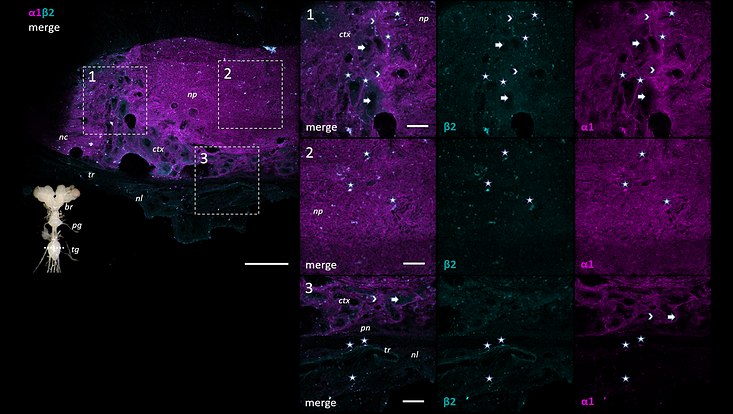New insights into an insect Na,K-ATPase
29 March 2022, by Marlena Winter

Photo: Marlena Herbertz
The Na,K-ATPase is a vital ion transporter and ubiquitously expressed in all animal cells. The enzyme is composed of two functionally diverse subunits in invertebrates, an α and a β-subunit. The ion transport can be inhibited by cardiac glycosides with harmful or even lethal effects on the organism. The large milkweed bug Oncopeltus fasciatus feeds on seeds of cardiac glycoside containing plants of the genus Asclepias. O. fasciatus takes up these cardiac glycosides without suffering any harm. Gene duplications of the α-subunit led to four α-subunits that differ in activity and resistance against cardiac glycosides, which enables O. fasciatus to use Asclepias species as its hostplants. Additionally, four β-subunits exist, which functions are still not completely understood.
In this study, we analyze the α/β-composition in the nervous tissue of O. fasciatus and discuss possible differences in their functions. We found a structure-specific, distinct distribution of the β-subunits in the nervous tissue, which was of special interest for us. Our findings point to a highly possible oligomeric state of the Na,K-ATPase, composed of two different α and β-subunits. Another novelty was the formation of homodimers by β-subunits, which seem to fulfill enzyme-independent functions, such as cell-cell contact formation that was supported by our research.
Original publication: Herbertz, M., Harder, S., Schlüter, H., Lohr, C., Dobler, S., Na,K-ATPase α1 and β-subunits show distinct localizations in the nervous tissue of the large milkweed bug. Cell Tissue Res (2022). https://doi.org/10.1007/s00441-022-03580-6
